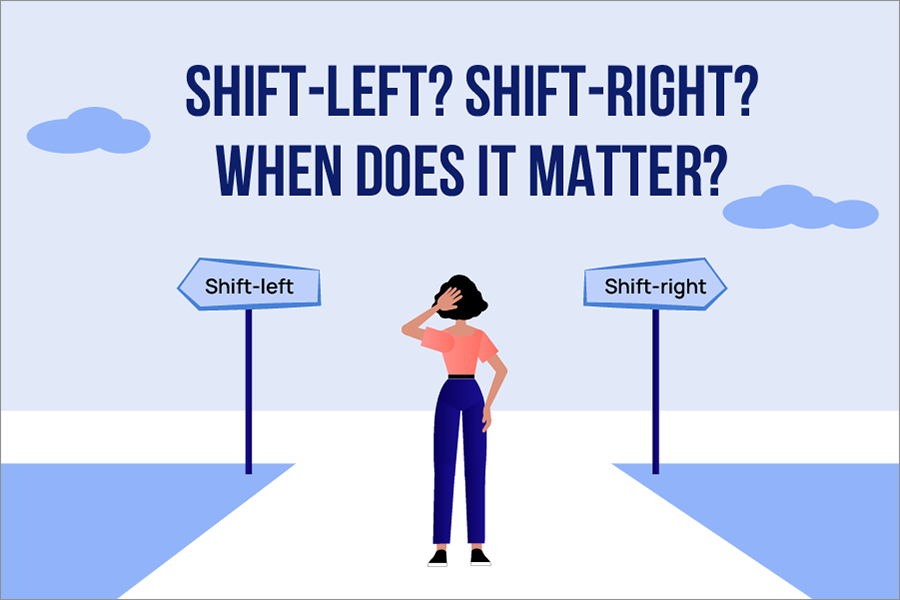In CI/CD environments, automated tests are the linchpin of a successful build and deployment. When tests go bad, they cause failed builds, necessary research, and examination. And, of course, if there is a real error, the need to be fixed and rerun. However, what often happens is that a test changes slightly or the underlying environment changes in a way that may cause a test to fail at certain times but not others. These situations are frustrating and I often mutter to myself, “Can’t the test figure these things out on their own?” Today, the answer is “Yes, they can!” Or, at least they can to a point.
Continue readingCategory: Test Methods
Shift Left? Shift Right? When Does It Matter?
A phrase we hear often in Software Testing circles and commentary is “shift left.” When we dig a little, we realize that “shift left” is talking about the idea that Software Testing is happening either too late in the process or it is not effective at the time it is being allocated. This dates back to an embrace, willingly or not, of the traditional Software Development Life Cycle (SDLC) and especially the Agile Waterfall (Agile Falls) methodology. In the waterfall methodology, each piece is completed (design, programming, testing, packaging, etc.) and the product moves through each of those cycles.
Continue readingHow to Accelerate Your Transition to the Cloud: Pt 2
This article is a follow-up to How to Accelerate your Transition to the Cloud. In which we discuss the reasoning for migrating to the cloud, lift and considerations for moving, most notably lift and shift and if QA leaders need to be all in. It can be read online at LogiGear.com/blog
Continue readingTest Planning to Avoid Technical Debt
Technical debt is not something an organization intends to get into. As we get involved in a new venture, or we look to expand on or develop a new opportunity for a legacy market, we think we are making good choices or that we have covered our bases when it comes to development and testing initiatives. However, over time and as demands for time and attention grow, technical debt is a persistent issue. It is common but it doesn’t need to be inevitable. Additionally, technical debt is, like any other debt, something that can creep up on us if we are not aware or alert to its ramifications.
Continue reading



